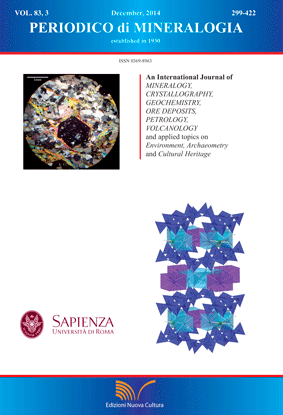Iron Age silicate slags from Val Malenco (Italy): the role of textural and compositional studies in the reconstruction of smelting conditions
DOI:
https://doi.org/10.2451/2014PM0018Keywords:
slags, smelting process, copper, sulfides, archaeometryAbstract
A petrographic study of silicate smelt-slags from several localities of Val Malenco (Italy) provides a key for unravelling the technologies used in reduction of copper ores during the Iron Age. Thick “tap type” slags with “rope surface” structures and thin, flat slags, were analysed. All slags are made of olivine (up to 60%), oxides, sulphides, minor interstitial Fe-rich pyroxenes (esseneite and augite) and glass. Olivine is zoned, with Mg-rich cores, Fe-rich inner rims and thin Ca-rich outer rims. Mesh textures, the composition of olivine cores and relic minerals, such as Cr-rich spinel, suggest that the mineralised levels of the Malenco ophiolitic complex were the source of the exploited ore. Ca-rich olivine rims and Ca-rich interstitial phases suggest a Ca-rich material was supposedly added during smelting to lower the melting point of the ore. The material used for this task could have been marbles or calcschists of ophicarbonates outcropping nearby Lanzada. Based on petrological considerations, the smelting conditions were constrained to a furnace in which, for temperatures around 1080-1200°C, oxygen fugacity was 10-14-10-9 atm.


